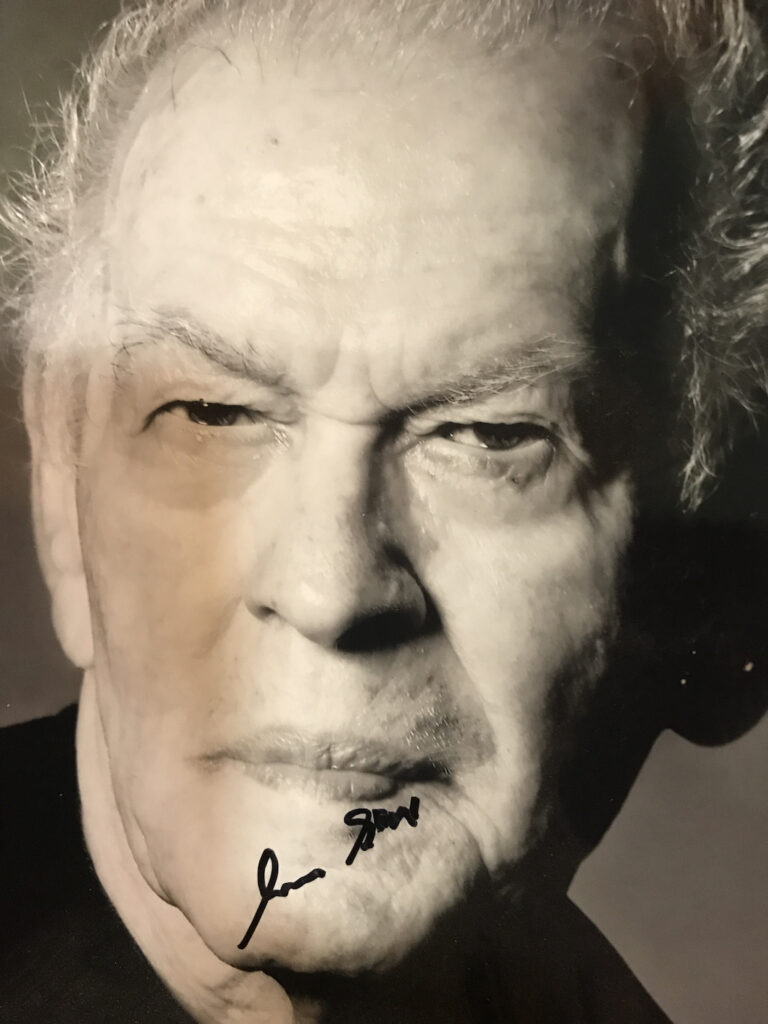Gene Sharp’s Legacy in an Age of Unraveling
Never in my wildest imaginings did I think that the United States would be facing the establishment of a totalitarian regime. And never have we been so ill equipped to resist it. Our situation is not unprecedented, however, and history has shown that sound, pragmatic, strategic nonviolent actions can develop the power necessary to resist and topple authoritarian regimes.

It was 1975, with a small gathering of activists at a remote Quaker camp in Vermont, when I first heard Dr. Gene Sharp speak of fighting dictatorships nonviolently. As a young man opposed to war and struggling with the principles of pacifism, how to oppose a totalitarian regime without armed struggle was core to my conflicted mind. His ideas galvanized me, and I began a lifelong mentorship and friendship with Gene.
Dr. Sharp’s concepts of strategically building power through nonviolent means came from decades of exhaustive research into the extensive history of the use of nonviolence throughout the world. His analysis led to the identification of 198 distinct methods of nonviolent actions. From these, he developed a deep understanding of the varying patterns of resistance embedded in these methods.

If you want to understand the foundational thinking on warfare, you have to go back to the early 1800s, to the writings of the Prussian general Carl von Clausewitz. His treatises on political-military analysis and strategy are foundational to war theory. Similarly, if you want to study the field of nonviolence, its power, history, methodology and theory, your efforts will invariably lead to Gene Sharp.
Gene died in 2018, leaving behind critical writings and pathways to gaining power with nonviolent actions. While in prison as a conscientious objector to the Korean War, Gene developed a relationship with Albert Einstein, who wrote the preface to his first book, Gandhi Wields the Weapon of Moral Power, in 1953. His work continues on within the Albert Einstein Institution, where all his writings can be found—most free to download. The Institution is now led by a close collaborator of Gene’s, Jamila Raqib, an Afghani refugee and knowledgeable strategist and faithful proponent of ‘the work’.
Although a prolific writer, Gene’s most effective document was an 88 page booklet titled From Dictatorship to Democracy. Written in response to his visit and trainings with Burmese rebels, the booklet has been translated into over 30 languages and has been credited in guiding many movements throughout the world, including the Arab Spring Uprising that ousted Egypt’s Mubarak, and Otpor, the nonviolent youth led protest group that overthrew the dictator Milosevic in Serbia.

In the 1970s, the work was influenced by Col. Robert Helvey, a retired military strategist who came to understand the potential for the use of nonviolent weapons to fight. His familiarity with developing grand strategies for warfare was adapted and adopted as a method for preparing, planning and executing a series of campaigns to undermine the civil structures that support authoritarian and dictatorial regimes.

Core to all of Gene’s work is the fundamental truth that all state power is conditional on the support of the citizens. “You take away the sources of power and the man who was formerly a tyrant becomes just an old man,” said Sharp in 1983.
Studies of tyranny describe a playbook of actions that can lead to totalitarian regimes. We are currently watching many being playing out in the United States. We are witnessing a slow, deliberate erosion of the very institutions that sustain a healthy democracy. Gene’s studies led to his theory of ‘pillars of support’; organizations and institutions that support the power structures of a society, necessary for the success of all totalitarian regimes. We are seeing today the weakening of many of these pillars, now under the increasing control of a political party led by one man. These pillars include the military,the judicial system, state dominated media, educational institutions, electoral commissions, civil servants, organized religious institutions and levers of political control. Sound familiar? Many of these institutions are being undermined—not only by politicians and demagogues, but by apathy, misinformation, and fear.
Today, it’s tragically ironic that Sharp’s manual—once used by activists in far-off struggles—might now be repurposed for use at home, perhaps under a new title: From Democracy to Dictatorship to Democracy.

What will it take to counter these undemocratic attacks on democratic institutions? In the face of voter suppression, educational institutional intimidation, attacks on the press, on independent law firms, the gutting of regulatory agencies, and the vilification of marginalized people, how do we organize to generate real, strategic power? What will motivate and inspire actions that ignite people’s imagination?
The answers are already in front of us—in Gene’s work, in our collective histories, and in the quiet resilience of communities refusing to yield. It is time for those of us who also consider ourselves patriots to revisit the teachings of Gene Sharp—to study his theories and strategies not as abstract history, but as tools for rebuilding a democracy we are on the threshold of losing.
“Dictators require the assistance of the people they rule, without which they cannot secure and maintain the sources of political power.”
― Gene Sharp, From Dictatorship to Democracy
Democracy From Dictatorship to Democracy Gene Sharp John McLeod Nonviolent Actions
Previous Next